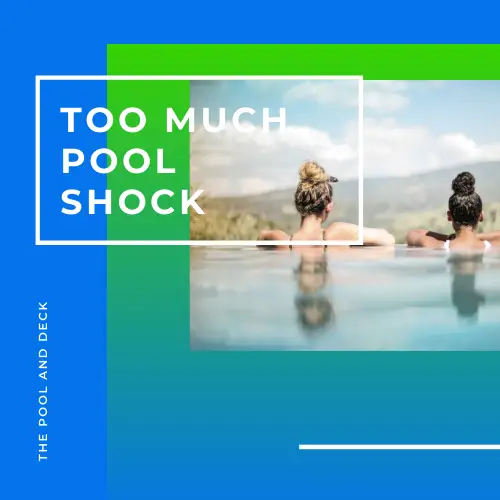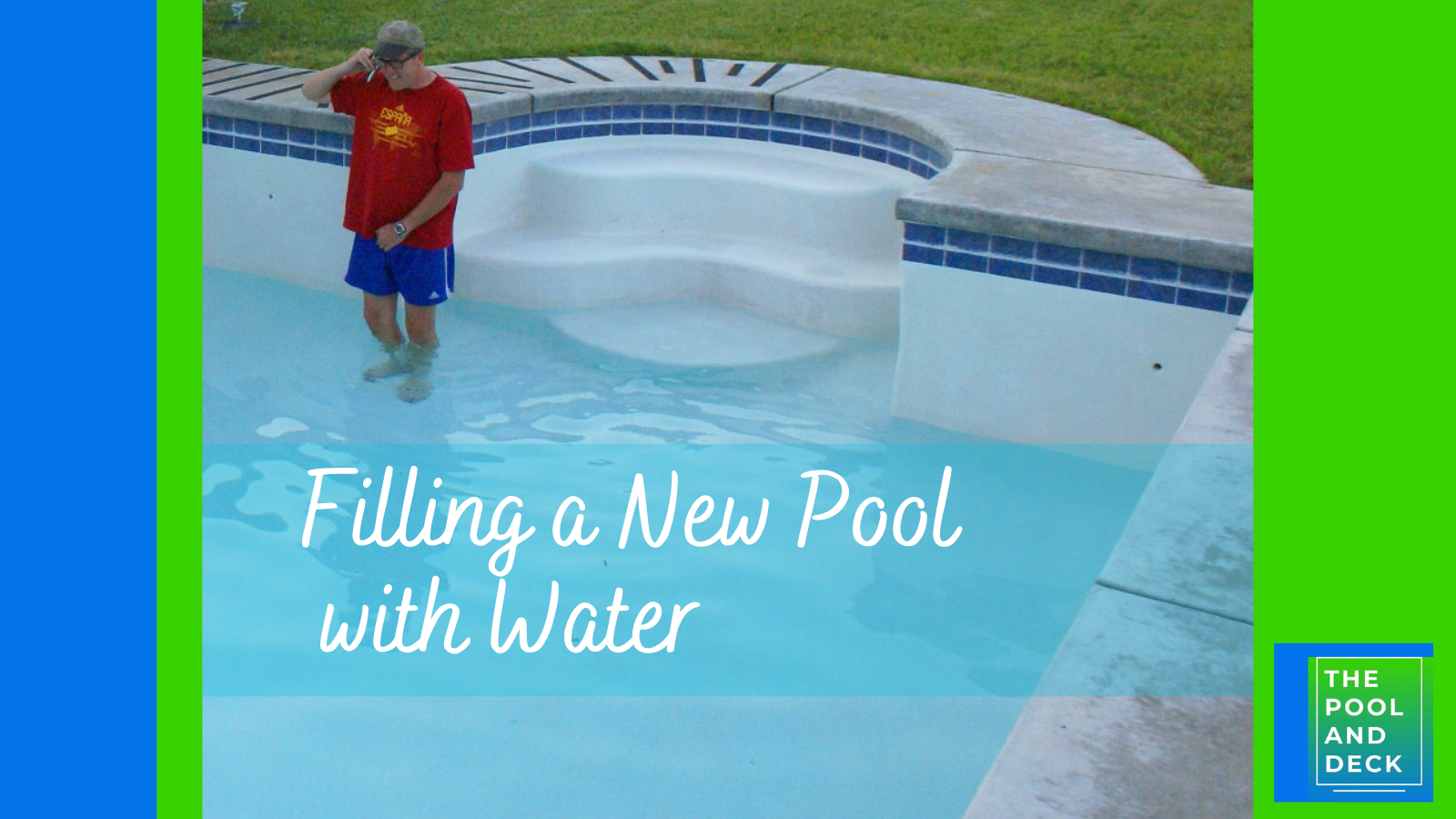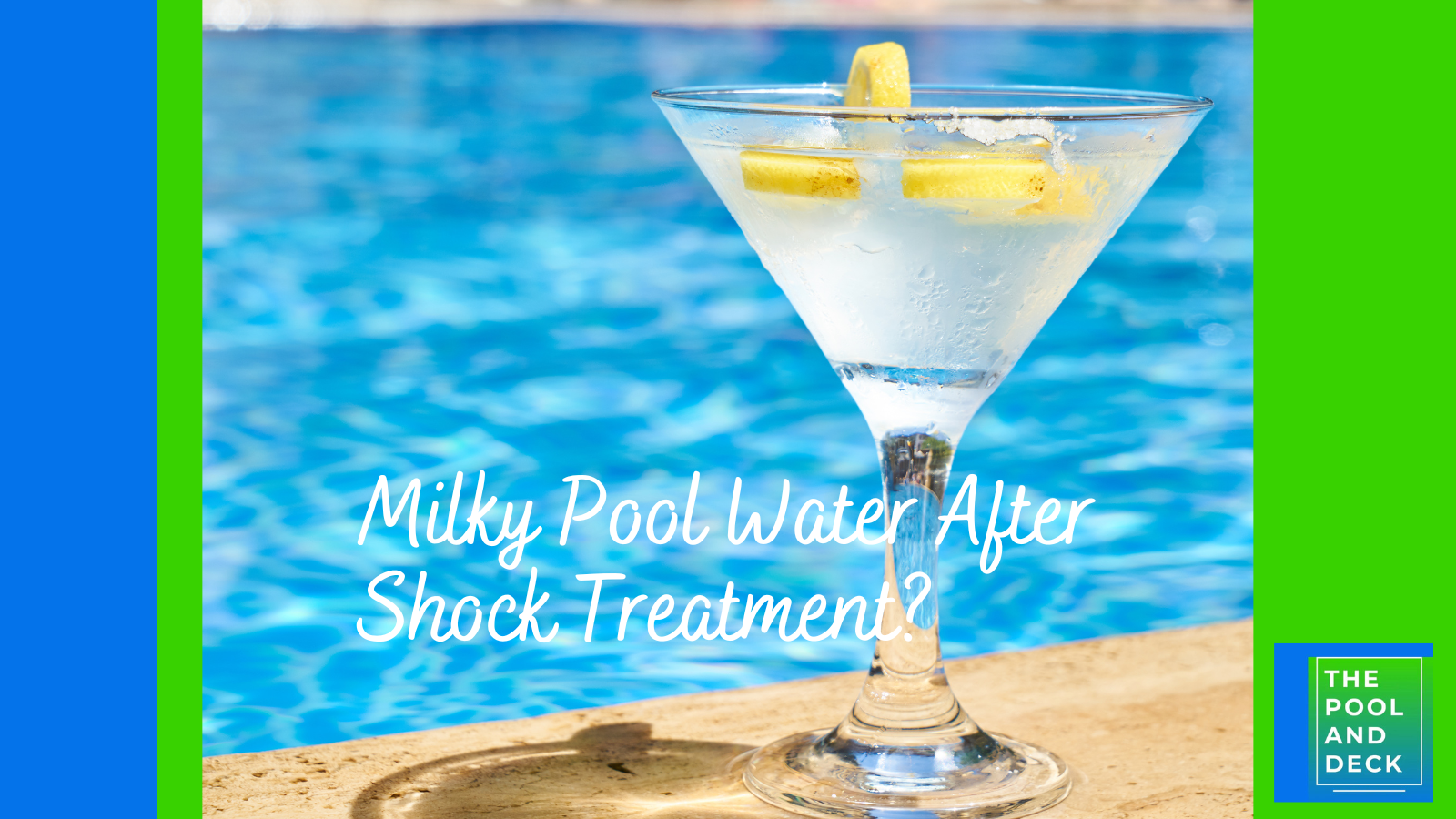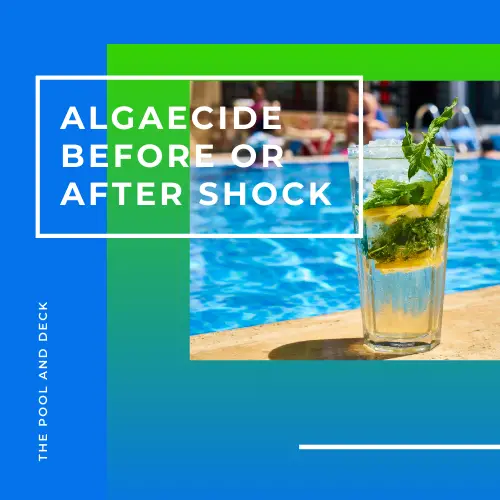Free Chlorine is High: Cause, Effect & Solution
thepoolanddeck.com is a participant in the Amazon Services LLC Associates Program, an affiliate advertising program designed to provide a means for sites to earn advertising fees by advertising and linking to Amazon.com . The website is also an affiliate of a few other brands. The affiliate links never increase your purchase price. We do appreciate your support. Thank you very much!
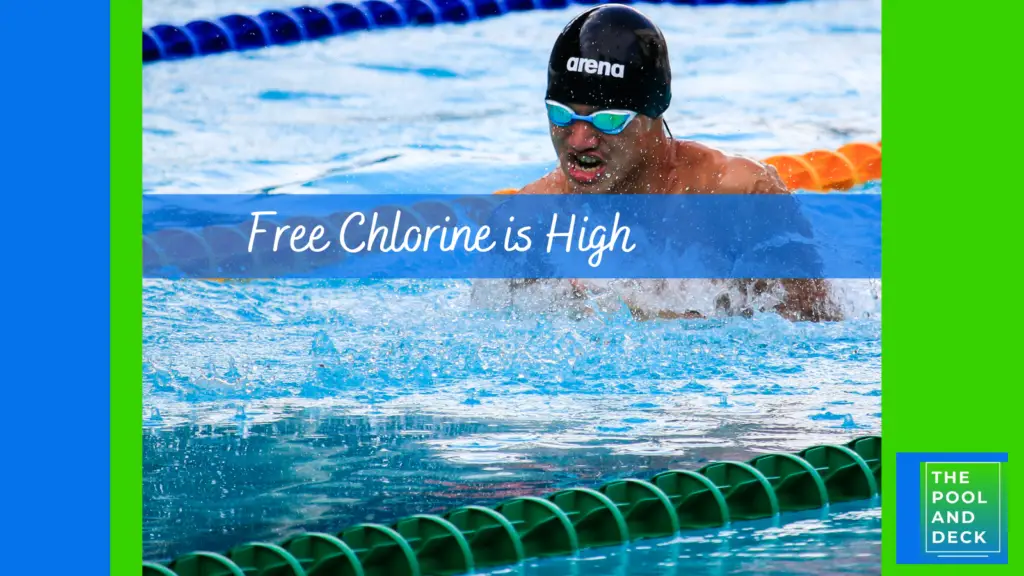
Table of Contents
What Does It Mean When Your Free Chlorine Is High?
The recommended and safe level for Free Chlorine is 2 – 4 ppm. Free Chlorine is high when the level exceeds 5 ppm and dangerously high when the level exceeds 7 – 8 ppm.
Free Chlorine levels of 2 – 4 ppm are high enough to kill pathogens such as bacteria and algae and yet low enough for swimmer comfort. When the free chlorine level is higher than 5 ppm swimmers may start to get red eyes, itching skin and stiff hair after a swim.
Swimming should not be permitted in the pool if the free chlorine level exceeds 7 – 8 ppm as it could be hazardous to swimmers health. Chlorine levels need to be brought down below 5 ppm, before the pool can be reopened for swimming.
For more information, read Pool Chemistry for Beginners: With 5 Super Helpful Cheat Sheets!
What is Free Chlorine?
Free chlorine is the amount of chlorine in your pool that is available to sanitize pool water. It’s the active, usable part of chlorine that can combine with bacteria and other contaminants and neutralize them.
When free chlorine levels drop below 1 ppm, the pool is at risk of becoming a breeding ground for bacteria and algae. But when free chlorine is high, that is over 5 ppm, the water becomes too acidic for comfort.
Maintaining the recommended level of free chlorine is essential for pool hygiene and swimmer safety. The recommended and safe level for free chlorine is 2 – 4 ppm.
For more information please check out What Is Free Chlorine in a Pool? Short & Easy to Understand Guide
Free Chlorine is High: What Could be the Causes?
You will notice that free chlorine is high in the pool due to one or more of the following causes:
- Over-chlorination: This is the most common cause. If too much chlorine is added to the pool, either manually or through an automatic chlorinator, the free chlorine level can become excessively high.
- Infrequent Use: Pools that are not used frequently may have high free chlorine levels. This is because the chlorine is not being used up by bacteria, algae, or other contaminants.
- High Cyanuric Acid Levels: Cyanuric acid stabilizes chlorine and prevents it from being depleted by sunlight. Cyanuric acid levels, naturally build up in a pool. If the level exceeds the recommended range, free chlorine will not get depleted fast enough. This can result in a build up of chlorine in the pool and you will notice that free chlorine is high.
- Cold & Cloudy Weather: Chlorine dissipation slows down in cold and cloudy weather. Pathogen activity slows down, reducing chlorine demand. Moreover, reduced sunlight slows down the UV degradation. The result is a buildup of free chlorine over time.
- Recent Shock Treatment: If the pool has recently been shock treated, the free chlorine levels may be temporarily high. This should normalize over time as the chlorine is used up.
Factors Contributing to High Free Chlorine
Here are a few factors that can contribute to high free chlorine levels:
- Pool Usage: The more the pool is used, the more contaminants are introduced into the water. These contaminants consume free chlorine, so if the pool is not used often, free chlorine levels can rise.
- Sunlight Exposure: Sunlight breaks down free chlorine in the water. If your pool is shaded or covered most of the time, free chlorine won’t break down as quickly, leading to higher levels.
- Water Temperature: Pathogen activity, which creates chlorine demand, is higher in warmer waters. Moreover, chlorine dissolves more readily in warmer water. During the colder months, chlorine demand is low due to lower pool usage and pathogen activity. So, if chlorine dosage is not toned down then you may find that free chlorine is high in your pool.
- pH Levels: The effectiveness of chlorine is higher when the pool water pH is low. So, low pool water pH will lead to an increase in free chlorine in the pool water.
- Chemical Balance: Other chemicals in your pool can also affect free chlorine levels. For example, high levels of cyanuric acid can bind to free chlorine, making it less available for sanitization and leading to a perceived high free chlorine level.
Free Chlorine is High: What are the Effects?
When free chlorine is high, it can have an adverse effect on swimmer comfort, pool water quality and lifespan of pool equipment. Specifically:
- Discomfort for Swimmers: High levels of free chlorine can cause skin, eye, and respiratory irritation in swimmers. It can also lead to dry skin and hair damage.
- Damage to Pool Equipment: Excessive free chlorine can corrode metal pool equipment and damage pool liners over time, leading to costly repairs.
- Changes in Water Quality: High free chlorine levels can make the pool water appear cloudy and affect the overall water balance, making it harder to maintain.
- Ineffectiveness of Other Chemicals: When free chlorine levels are too high, it can reduce the effectiveness of other pool chemicals, such as algaecides and flocculants.
- Health Risks: In extreme cases, prolonged exposure to high levels of free chlorine can pose health risks, including asthma and other respiratory problems.
Effects of High Free Chlorine on Pool Water Chemistry
High free chlorine levels can impact your pool’s water chemistry in following ways:
- pH Levels: High free chlorine levels can cause the pH of your pool water to rise, making it more alkaline. This can lead to scaling and cloudiness in the water.
- Total Alkalinity: High free chlorine can also affect the total alkalinity of your pool, which can cause fluctuations in pH levels and make it harder to balance your pool’s chemistry.
- Calcium Hardness: Excessive free chlorine can cause calcium to precipitate out of the water, leading to an increase in calcium hardness. This can result in scaling and damage to pool surfaces and equipment.
- Cyanuric Acid Levels: High free chlorine levels can cause a decrease in cyanuric acid levels, which can make your chlorine less effective and cause it to dissipate more quickly under sunlight.
- Total Dissolved Solids (TDS): High free chlorine levels can contribute to an increase in TDS, which can lead to cloudy water, scaling, and a decrease in the effectiveness of your pool chemicals.
Things to Do When Free Chlorine is High in Your Pool
Here’s a step-by-step guide on how to lower free chlorine levels in your pool:
- Stop Adding Chlorine: If your free chlorine levels are high, obviously the first step is to stop adding more chlorine to your pool. This includes removing chlorine floaters from the pool, removing Trichlor tablets from the skimmers and turning off any automatic chlorinators.
- Test Your Pool Water: Use a reliable pool testing kit to check the free chlorine levels in your pool. This will help you understand how much you need to lower the levels.
- Let the Sun Do Its Work: Sunlight and time are your best friends when it comes to dealing with a pool where free chlorine is high.
- Use a Chlorine Neutralizer: You can use a chlorine neutralizer to bring down high free chlorine levels. Follow the instructions on the product label for the correct dosage.
- Increase Pool Usage: Encourage more swimming in the pool. The more the pool is used, the more free chlorine will be used up.
- Re-test and Adjust: After implementing these steps, re-test your pool water. If the free chlorine levels are still high, you may need to repeat these steps or seek professional help.
Tips to Prevent High Free Chlorine Levels
Prevention is better than cure, so here are some tips to prevent free chlorine from increasing in the first place:
Recommended Chemical Test Kit
Taylor K-2005 Complete DPD 9-in-1 Test Kit
Tests for free & total chlorine, bromine, pH, total alkalinity, total hardness, and cyanuric acid (CYA) levels.
- Regular Testing: Test your pool water regularly to monitor the free chlorine levels. This will help you make necessary adjustments before the levels get too high.
- Proper Chlorination: Avoid over-chlorinating your pool. Use the recommended amount of chlorine based on your pool size and the number of swimmers.
- Use of Stabilizer: Use a chlorine stabilizer, like cyanuric acid, to help maintain a more stable free chlorine level.
- Pool Circulation: Ensure your pool’s circulation system is working properly. Good circulation helps distribute the chlorine evenly throughout the pool.
- Professional Help: If you’re having consistent issues with high free chlorine levels, consider seeking help from a pool professional. They can provide expert advice and services to help maintain your pool’s chemistry.
Thank you very much for reading the post. I do hope you found it informative and helpful.



